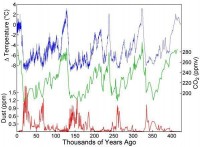By Karen Remo Listana, Business 24-7
The global carbon market is currently growing rapidly. Trading volume in the first half of 2008 at $59 billion (Dh217bn) reached the levels for all of 2007 at $63bn. This growth is predominantly attributable to the European Union Emissions Trading Scheme (EUETS) and to increasing interest in global Kyoto credits from the Clean Development Mechanism (CDM) and Joint Implementation (JI).
In the region, however, there is not a single project on carbon trading, said a senior official of EcoVentures. According to Armen Vartanian, Director at EcoVentures, the Middle East and North African (Mena), the region has a potential to generate $5bn a year from the carbon trading market.
But unlocking the potential, however, would take time. “There are too many factors involved, and regulation is one. It depends entirely on the carbon market. We, as market participants, rely entirely on the market,” he told Emirates Business. “As long-term participants we are taking a bet that some sort of regulation will happen,” Vartanian said. “There is a lot of interest. DMCC [Dubai Multi Commodities Centre] and Doha Bank, for example have made public announcement of consideration to go into the carbon market.”
Dubai has in 2007 launched a bid to become a centre for trading greenhouse gas emissions permits, diving into a fast-growing market and the potential to turn the region’s sizeable carbon footprint into cash. Read story here.
World Climate Report
The January 9th, 2008 issue of Science, the official publication of the American Association for the Advancement of Science, contains a remarkable article by University of Washington atmospheric scientist David Battisti and Stanford co-author Rosamond Naylor. Science reputedly is the world’s most prestigious refereed science journal in the world. Not in this case. The article is remarkably bad. A colleague of mine, looking at an advance copy asked, in all seriousness, if this was an editorial rather than a scientific paper. Sorry, I replied, it’s the real deal.
Actually it’s pretty bad science fiction. Good science fiction is at least plausible. Battisti’s argument seems straightforward. Take all 23 of the climate models used by the United Nations’ Intergovernmental Panel on Climate Change (IPCC). Over a substantial portion of the moist tropics and desert subtropics, there is a 90% chance that average summer (June-August) temperatures in 2100 will exceed today’s record values, resulting in massive rises in commodity prices as a result of extreme food shortages.
You know the paper’s going to be bad from the first sentence: “The food crisis of 2006-2008 demonstrates the fragile nature of feeding the world’s human population.” Never mentioned is that this “crisis” was largely due to a knee-jerk political reaction-huge ethanol mandates-in response to climate science alarmism. That crisis was caused by papers like this.
There’s a central problem in Battisti’s analysis. It assumes that projected temperature changes will have such detrimental effects because there’s no economic incentive to adapt to the slow climate change that takes place over a century. Apparently people are so stupid that they won’t do this. Instead, the paper states that “adaptation can be developed globally but will be costly and will require political prioritization.”
What? Check your mailbox. If you live in the ‘burbs’ or further out, you’ve already received your Burpee seed catalog, you’re going to see a tomato called “Heatwave,” originally developed about ten years ago in response to the need for plants that set fruit on hot nights. This extends the range of our favorite garden vegetable into the tropics and preadapts it to a warming climate. You can bet that genetic engineers at Monsanto, DuPont/Pioneer and the other big seedsters of the world are already testing varieties of corn that are more water efficient and will set fruit in hotter weather. As it is, corn grows from Minnesota to the tropics. It’s extremely likely that this corn will be developed pronto, as a very close relative - sugar cane - thrives in the hottest moist environments on the planet.
What about soybeans, the largest source of primary protein in the world? The U.S. produces more than any other nation on earth. If we didn’t cram most of them into pigs and chickens, the amount of nutrition from this remarkable crop could feed a substantial portion of the world by itself. They grow from the northern Great Plains down to Mississippi. Yields are about the same in both places. Summer temperatures in Mississippi average 12.5F warmer than in Minnesota, a much greater mean temperature change than is projected by the IPCC. Further, beans in general are pretty good at tolerating both heat and drought (which is one reason why Mexican food is so tasty!). If it really got warm, much of our agriculture could switch to grain sorghum, another great source of carbohydrate and protein. Right now, you’ll find it growing largely in hot, dry climates, because it likes hot, dry climates. And that’s without any genetic engineering to make them it even more adaptable.

The first example of global warming horrors that the authors cite is the 2003 summer heat wave in Europe, which they say is “one of the deadliest climate-related disasters in western history.” Their citation? An unrefereed grey literature publication from an environmental advocacy group, the Earth Policy Institute. They forgot to mention that there was a similar heat wave in France in 2006. In 2003 there were more deaths than should have occurred, according to heat-mortality models. By 2006, in a similar heat wave, there were far less-mortality was so relatively low that few people outside of Europe are even aware that there was a 2006 summer heat wave. Read more here.
Gregory F. Fegel, Pravda, January 11, 2009
The earth is now on the brink of entering another Ice Age, according to a large and compelling body of evidence from within the field of climate science. Many sources of data which provide our knowledge base of long-term climate change indicate that the warm, twelve thousand year-long Holocene period will rather soon be coming to an end, and then the earth will return to Ice Age conditions for the next 100,000 years.
Ice cores, ocean sediment cores, the geologic record, and studies of ancient plant and animal populations all demonstrate a regular cyclic pattern of Ice Age glacial maximums which each last about 100,000 years, separated by intervening warm interglacials, each lasting about 12,000 years.
Most of the long-term climate data collected from various sources also shows a strong correlation with the three astronomical cycles which are together known as the Milankovich cycles. The three Milankovich cycles include the tilt of the earth, which varies over a 41,000 year period; the shape of the earth’s orbit, which changes over a period of 100,000 years; and the Precession of the Equinoxes, also known as the earth’s ‘wobble’, which gradually rotates the direction of the earth’s axis over a period of 26,000 years. According to the Milankovich theory of Ice Age causation, these three astronomical cycles, each of which effects the amount of solar radiation which reaches the earth, act together to produce the cycle of cold Ice Age maximums and warm interglacials.
The graph of the Vostok ice core data <> shows that the Ice Age maximums and the warm interglacials occur within a regular cyclic pattern, the graph-line of which is similar to the rhythm of a heartbeat on an electrocardiogram tracing. The Vostok data graph also shows that changes in global CO2 levels lag behind global temperature changes by about eight hundred years. What that indicates is that global temperatures precede or cause global CO2 changes, and not the reverse.

In other words, increasing atmospheric CO2 is not causing global temperature to rise; instead the natural cyclic increase in global temperature is causing global CO2 to rise. The reason that global CO2 levels rise and fall in response to the global temperature is because cold water is capable of retaining more CO2 than warm water. That is why carbonated beverages loose their carbonation, or CO2, when stored in a warm environment. We store our carbonated soft drinks, wine, and beer in a cool place to prevent them from loosing their ‘fizz’, which is a feature of their carbonation, or CO2 content. The earth is currently warming as a result of the natural Ice Age cycle, and as the oceans get warmer, they release increasing amounts of CO2 into the atmosphere.
About 325,000 years ago, at the peak of a warm interglacial, global temperature and CO2 levels were higher than they are today. Today we are again at the peak, and near to the end, of a warm interglacial, and the earth is now due to enter the next Ice Age. If we are lucky, we may have a few years to prepare for it. The Ice Age will return, as it always has, in its regular and natural cycle, with or without any influence from the effects of AGW.
The AGW theory is based on data that is drawn from a ridiculously narrow span of time and it demonstrates a wanton disregard for the ‘big picture’ of long-term climate change. The data from paleoclimatology, including ice cores, sea sediments, geology, paleobotany and zoology, indicate that we are on the verge of entering another Ice Age, and the data also shows that severe and lasting climate change can occur within only a few years. While concern over the dubious threat of Anthropogenic Global Warming continues to distract the attention of people throughout the world, the very real threat of the approaching and inevitable Ice Age, which will render large parts of the Northern Hemisphere uninhabitable, is being foolishly ignored. See more here.
Earlier last week, Joe Bastardi had speculated that Putin was aware of the global cooling threat. See Noel Sheppard’s take on this Pravda story here. As Alan Siddons notes Whether most of the “new carbon dioxide” we’ve been seeing these past few decades owes to the recent Little Ice Age rebound or even to a delayed effect from the Medieval Warm Period - who knows? - it is certainly not due to human emissions. Because most of this extra CO2 doesn’t have the correct isotope signature.”


